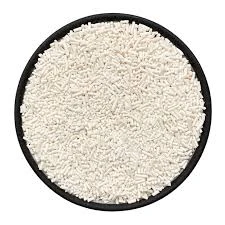
e570 food additive
Understanding E570 The Role and Impact of Stearic Acid in Food Additives
In the world of food science, food additives play a crucial role in enhancing the quality, flavor, and preservation of numerous products that we consume daily. One of the lesser-known additives is E570, also known as stearic acid. This fatty acid, derived from both animal and plant sources, is an interesting component in the food industry due to its various functionalities and implications for health and food processing.
What is E570?
E570 is categorized as a food additive that primarily serves as an emulsifier, stabilizer, and thickening agent. It belongs to the group of fatty acids and is chemically identified as a long-chain saturated fatty acid with an 18-carbon backbone. Stearic acid is naturally found in various sources, including cocoa butter, shea butter, and the fats of some animals. Its inclusion as E570 in food products indicates its applicability in a wide range of formulations.
Functions of E570 in Food Products
One of the primary functions of E570 in food products is its ability to act as an emulsifier. Emulsifiers are substances that help mix ingredients that typically do not combine well, such as oil and water. In products like margarine, chocolate, and certain salad dressings, stearic acid helps achieve a smooth and stable mixture, thus improving texture and mouthfeel.
Additionally, E570 serves as a stabilizer. It helps maintain the desired consistency of food products, ensuring they do not separate or change in texture over time. This property is particularly valuable in processed foods that undergo various stages of production and storage, as it extends their shelf life and maintains product quality.
Moreover, E570 acts as a thickening agent, contributing to the desired viscosity in sauces, creams, and desserts. This not only enhances the sensory experience of the product but also influences its appeal and consumer acceptance. The culinary versatility of stearic acid underscores its importance in modern food technology.
e570 food additive

Safety and Regulatory Aspects
The safety of food additives, including E570, is a primary concern for regulatory bodies. Stearic acid is generally recognized as safe (GRAS) when consumed in typical dietary amounts. The European Food Safety Authority (EFSA) and the U.S. Food and Drug Administration (FDA) have evaluated the safety of stearic acid, concluding that it poses no significant risk when used appropriately in food products.
However, as with all food additives, excessive consumption can lead to health issues. While E570 is not associated with harmful effects at normal levels of intake, those with specific dietary restrictions or allergies should always check food labels carefully.
Health Implications
Understanding the health implications of E570 is important for consumers. Stearic acid is unique among saturated fatty acids, as it does not appear to raise cholesterol levels in the same way that other saturated fats do. It has been shown to have neutral effects on blood lipid levels, making it a somewhat preferable option among saturated fats, although moderation is still critical.
Moreover, as the food industry moves toward cleaner labels and natural ingredients, there has been a growing trend towards using plant-derived sources of stearic acid, which may appeal to health-conscious consumers. These natural alternatives can enhance the perception of a product as a healthier choice.
Conclusion
E570, or stearic acid, is a multifaceted food additive that plays an integral role in the production and quality of various food products. As an emulsifier, stabilizer, and thickening agent, it contributes to the texture and stability of many familiar items in our diet. While it is recognized as safe by regulatory authorities, awareness of its dietary implications is essential. As consumers continue to seek transparency and health-conscious options in food products, E570's origins and health effects will likely remain a topic of interest within the evolving landscape of food science and nutrition.
-
Sodium Dichloroisocyanurate Safety Handling ProtocolsNewsJul.29,2025
-
Mining Chemicals for Copper Extraction Processes GuideNewsJul.29,2025
-
Fertilizer for Sale Shipping and Storage TipsNewsJul.29,2025
-
Dimethyl Disulfide as Sulfurizing AgentNewsJul.29,2025
-
Benzotriazole Safety Data Handling and Storage GuidelinesNewsJul.29,2025
-
Ammonium Bicarbonate Safety Handling Storage GuidelinesNewsJul.29,2025
-
The Transformative Role Of Trichloroisocyanuric Acid in Water TreatmentNewsJul.23,2025
Hebei Tenger Chemical Technology Co., Ltd. focuses on the chemical industry and is committed to the export service of chemical raw materials.
-

view more DiethanolisopropanolamineIn the ever-growing field of chemical solutions, diethanolisopropanolamine (DEIPA) stands out as a versatile and important compound. Due to its unique chemical structure and properties, DEIPA is of interest to various industries including construction, personal care, and agriculture. -

view more TriisopropanolamineTriisopropanolamine (TIPA) alkanol amine substance, is a kind of alcohol amine compound with amino and alcohol hydroxyl, and because of its molecules contains both amino and hydroxyl. -

view more Tetramethyl Thiuram DisulfideTetramethyl thiuram disulfide, also known as TMTD, is a white to light-yellow powder with a distinct sulfur-like odor. It is soluble in organic solvents such as benzene, acetone, and ethyl acetate, making it highly versatile for use in different formulations. TMTD is known for its excellent vulcanization acceleration properties, which makes it a key ingredient in the production of rubber products. Additionally, it acts as an effective fungicide and bactericide, making it valuable in agricultural applications. Its high purity and stability ensure consistent performance, making it a preferred choice for manufacturers across various industries.











